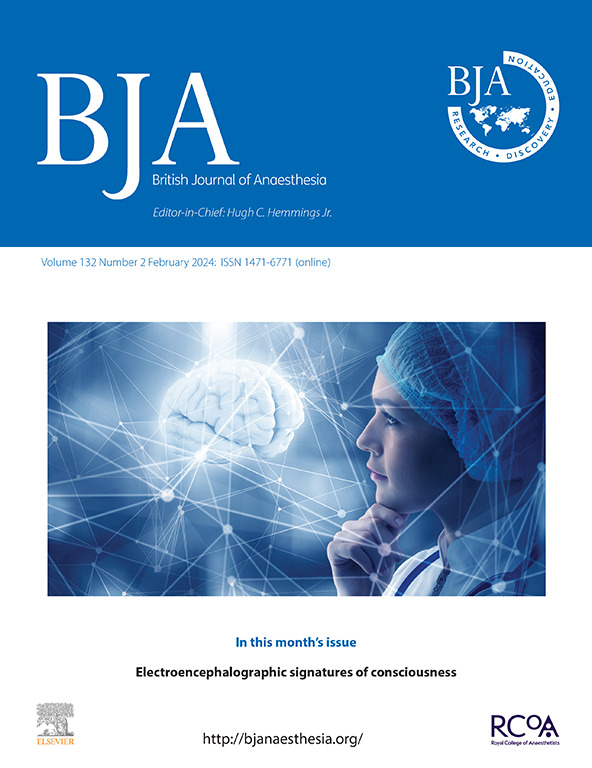Sevoflurane sedation: blind alley or cunning plan?
IF 9.1
1区 医学
Q1 ANESTHESIOLOGY
引用次数: 0
Abstract
Patient-controlled sedation using inhaled anaesthetics provides several potential advantages. In a study of healthy volunteers, low-dose inhaled sevoflurane impaired volunteers' ability to complete a button-press task without significant cardiorespiratory compromise. Thus patient-controlled sedation using sevoflurane might be feasible; however, regulatory hurdles require proof of safety and efficacy through clinical trials. Although a promising concept, it must be demonstrated that patients cannot induce unconsciousness on their own despite any interactions with opioid analgesics. Significant steps remain before practical, patient-controlled sevoflurane sedation can be implemented.
七氟醚镇静:死胡同还是诡计?
患者控制镇静使用吸入麻醉剂提供了几个潜在的优势。在一项对健康志愿者的研究中,低剂量吸入七氟醚会损害志愿者完成按钮任务的能力,而不会对心肺造成明显损害。因此,患者控制镇静使用七氟醚可能是可行的;然而,监管障碍要求通过临床试验证明安全性和有效性。虽然这是一个很有前途的概念,但必须证明,尽管与阿片类镇痛药有任何相互作用,但患者不能自行诱导无意识。在实际的、病人控制的七氟醚镇静可以实施之前,还有重要的步骤要做。
本文章由计算机程序翻译,如有差异,请以英文原文为准。
求助全文
约1分钟内获得全文
求助全文
来源期刊
CiteScore
13.50
自引率
7.10%
发文量
488
审稿时长
27 days
期刊介绍:
The British Journal of Anaesthesia (BJA) is a prestigious publication that covers a wide range of topics in anaesthesia, critical care medicine, pain medicine, and perioperative medicine. It aims to disseminate high-impact original research, spanning fundamental, translational, and clinical sciences, as well as clinical practice, technology, education, and training. Additionally, the journal features review articles, notable case reports, correspondence, and special articles that appeal to a broader audience.
The BJA is proudly associated with The Royal College of Anaesthetists, The College of Anaesthesiologists of Ireland, and The Hong Kong College of Anaesthesiologists. This partnership provides members of these esteemed institutions with access to not only the BJA but also its sister publication, BJA Education. It is essential to note that both journals maintain their editorial independence.
Overall, the BJA offers a diverse and comprehensive platform for anaesthetists, critical care physicians, pain specialists, and perioperative medicine practitioners to contribute and stay updated with the latest advancements in their respective fields.

 求助内容:
求助内容: 应助结果提醒方式:
应助结果提醒方式:


